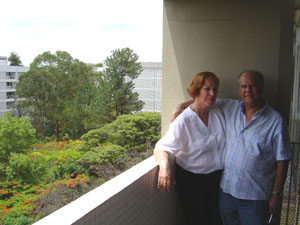
(continued from here)
Tactics and Interventions
In programming and organizing the city, there is a tendency among modernist designers to universalize the individual to a certain type and his desires to a number of basic necessities. The residents of contemporary Brasília, like in many other cities, consist of a range of types and socioeconomic levels. Additionally, the inhabitants of the superquadras include residents, employees, domestics, maintenance people, guards, vendors, and visitors. It is the variety of people that inhabit the same collective space that keeps the public/private relationship dynamic. By investigating the unique practices of different people and recording their individual stories, I discovered that people engaged in tactics that adapted different types of spaces depending on the particular level of privilege they had to that space. Contrary to the intentions of the original designers, among the residents of the superquadras the idea has evolved that being a resident of an apartment block implies a certain entitlement to the pilotis (the collective space underneath and around it). This sense of entitlement is not always extended to pedestrians, and as a result the pilotis is a contested space. In order to protect the “original character” of the superquadras by law, the government agency IPHAN (Instituto do Patrimônio Histórico e Artístico Nacional), has drafted a preservation plan that requires legal approval for all proposed architectonic changes. Part of the Código de Obras e Edificações (building code) is that the pilotis must remain open and free for public passage, according to the original plan.
Nevertheless, residents are adept at bending and distorting the codes in order to modify and adapt the pilotis to their own advantage. The residents work to control territory that is nearest to private space. Collectivization is the appropriation of space for private use by the residents of the building. The effect that “collectivization” of the pilotis has on circulation often goes unnoticed. Walking through the pilotis illustrates one way to mediate thresholds and boundaries as well as negotiate spatial adaptations. If the walker has no privilege to the territory, walking becomes a trespass. The central positioning of the porteiro (guard) and the surreptitious presence of surveillance cameras have the effect of self-discipline on the pedestrian. It also defines relationships between those that monitor and those that are monitored.
Cerca vivas (hedges) planted around buildings act as architectural extensions that add layers and thresholds to the approach to the pilotis. By law, fences and walls are not permitted in the pilotis, but cerca vivas (meaning “live fence”) circumnavigate the law because they are justified as “making the building more beautiful.” Their openings often shape circulation into narrow passages under the building where they are in view of the guard, or else they are routed around the building entirely.
The pilotis floor has spatial significance for the residents in that it is treated as a threshold between the public and the collective space belonging to the condominium. Often an elevated platform, the step up to a brilliant tile floor serves to separate the terra (earth) from the casa (house). It is cleaned at least once a day and polished to a brilliant shine weekly or monthly. The impact of the clean floor, its ability to impart shame on the visitor, acts as a psychological barrier to pedestrians.
While condominium residents use different tactics to control
access to space in the pilotis, the non-residents, having less privilege to
this space, take advantage of cracks and interstitial spaces in the superquadras.
The tactics take the shape of informal hand-built structures and quickly assembled
stands offering ephemeral services: one key copy, or one shoeshine. There
are also transient vendors moving about the quadra on foot to satisfy momentary
needs: one ice cream, or one coconut. They weave their own paths through the
geometric grid of the superquadras, wandering in search of other
wanderers, to make the perfect match of thirst and drink, desire and commodity.
They move in the spaces between buildings, on the edges, at path intersections.
They respond to daily cycles that guide circulation patterns of people in
the superquadras. They take advantage of opportunity and function off the
grid. Borrowing infrastructure—water, trees, benches, and utility holes—
operate in what de Certeau calls the space of the “nowhere, which gives
a tactic mobility… that must seize on the wing the possibilities that
offer themselves at any given moment.”
(continued here)


